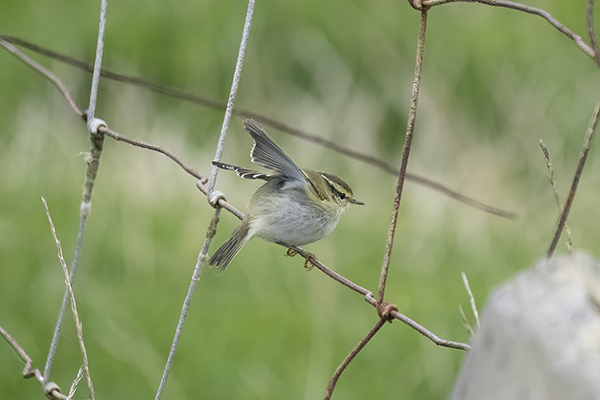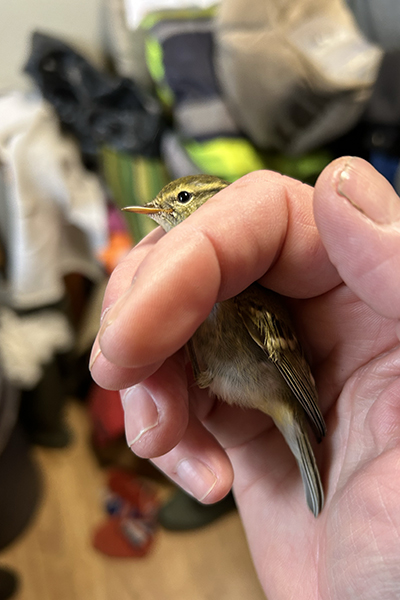The fine days came to an abrupt end later in our week on Fair isle with low cloud and sea mist! It's still the only time I can recall spending a week on Fair Isle, or Shetland, without having to wear waterproofs though. A shame as the easterly winds held so much promise but the birds couldn't see Fair isle due to the poor visibility.
A Little Bunting had been trapped and ringed in the plantation heligoland trap and was touring the island. It had been colour ringed as part of a project to see if these birds are overwintering in the UK at other sites following the discovery of a wintering flock of 8 in Cornwall last year. We eventually bumped into it as it fed along the track leading to Pund. Interestingly the metal BTO ring was initially more visible than the colour rings and it took a bit of viewing and lots of photos before we confirmed the colour ring combination. This is possibly the first colour ringed Little Bunting from the current scheme to be photographed in the UK!
Commoner migrants were few and far between with only a handful of Garden Warblers, Lesser Whitethroats, Willow Warblers, Whinchats and Chiffchaffs being seen. Yellow-browed Warblers started arriving in droves through.
 |
| Whinchat |
Fair Isle, like many bird observatories, are taking part in the colour ringing project for Yellow-browed Warblers and I was lucky enough to be able to ring several of these little Siberian gems.
The aims of the project are as follows:
The project aims to increase the number of Yellow-browed Warblers being ringed in the UK and subsequently increase the recovery rate through the use of colour rings in order to answer some of the following questions:
• To learn more about the trajectory of Yellow-browed Warbler movements within Europe throughout the autumn and into the winter months.
• To investigate whether there is a subsequent southbound movement after birds initially follow a western trajectory, reaching the westernmost limits of Europe e.g., Shetland, Western Isles, Cornwall
• To identify whether YBWs arriving in the UK in autumn are wintering further south in Europe.
• To identify migration stopover duration.
• To identify winter site usage, with increased potential to identify winter site fidelity.
The colour-marking scheme will consist of a colour ring combination using a BTO metal ring on the right tarsus along with three additional colour rings (one above the BTO on right tarsus and two on the left tarsus). Initially seven different colours will be used (Red, Orange, Blue, Green, Yellow, Purple and White) and rotated to every available position, including that above the metal ring. This does not cause duplication with either of the two current existing Yellow-browed Warbler colour ring projects in Europe (both in France).
More details can be found here
 |
| Green over metal right leg and red over green left leg. Ringed in Deryks garden at Burkle. |








































































No comments :
Post a Comment